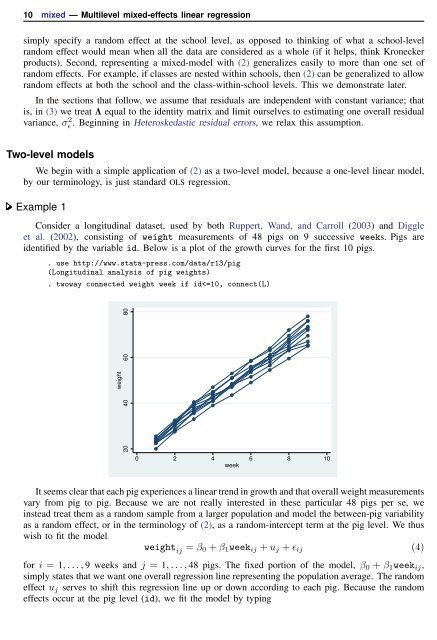mixed - Stata
mixed - Stata
mixed - Stata
Create successful ePaper yourself
Turn your PDF publications into a flip-book with our unique Google optimized e-Paper software.
10 <strong>mixed</strong> — Multilevel <strong>mixed</strong>-effects linear regression<br />
simply specify a random effect at the school level, as opposed to thinking of what a school-level<br />
random effect would mean when all the data are considered as a whole (if it helps, think Kronecker<br />
products). Second, representing a <strong>mixed</strong>-model with (2) generalizes easily to more than one set of<br />
random effects. For example, if classes are nested within schools, then (2) can be generalized to allow<br />
random effects at both the school and the class-within-school levels. This we demonstrate later.<br />
In the sections that follow, we assume that residuals are independent with constant variance; that<br />
is, in (3) we treat Λ equal to the identity matrix and limit ourselves to estimating one overall residual<br />
variance, σɛ 2 . Beginning in Heteroskedastic residual errors, we relax this assumption.<br />
Two-level models<br />
We begin with a simple application of (2) as a two-level model, because a one-level linear model,<br />
by our terminology, is just standard OLS regression.<br />
Example 1<br />
Consider a longitudinal dataset, used by both Ruppert, Wand, and Carroll (2003) and Diggle<br />
et al. (2002), consisting of weight measurements of 48 pigs on 9 successive weeks. Pigs are<br />
identified by the variable id. Below is a plot of the growth curves for the first 10 pigs.<br />
. use http://www.stata-press.com/data/r13/pig<br />
(Longitudinal analysis of pig weights)<br />
. twoway connected weight week if id
















